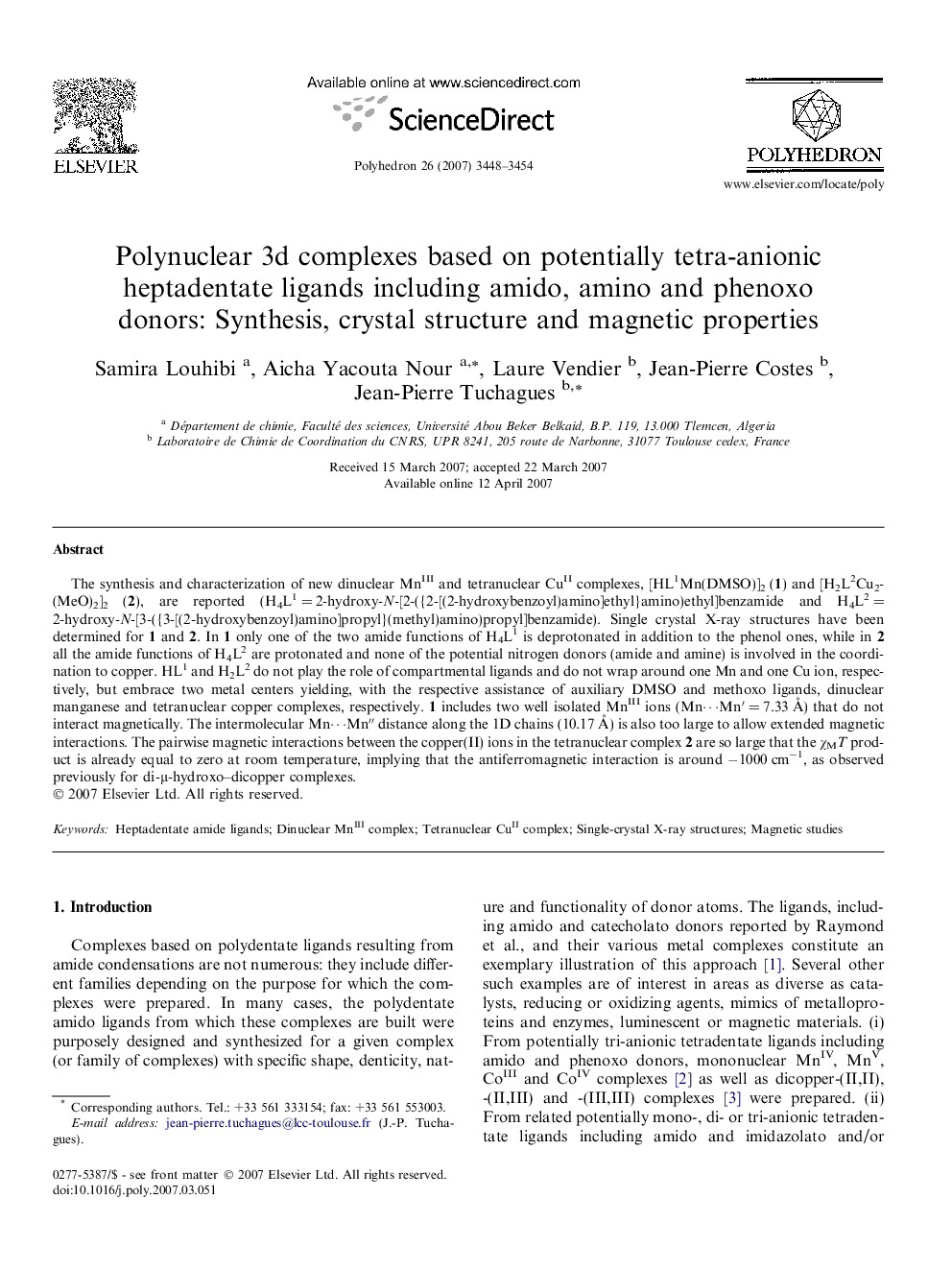| کد مقاله | کد نشریه | سال انتشار | مقاله انگلیسی | نسخه تمام متن |
|---|---|---|---|---|
| 1338518 | 979668 | 2007 | 7 صفحه PDF | دانلود رایگان |

The synthesis and characterization of new dinuclear MnIII and tetranuclear CuII complexes, [HL1Mn(DMSO)]2 (1) and [H2L2Cu2(MeO)2]2 (2), are reported (H4L1 = 2-hydroxy-N-[2-({2-[(2-hydroxybenzoyl)amino]ethyl}amino)ethyl]benzamide and H4L2 = 2-hydroxy-N-[3-({3-[(2-hydroxybenzoyl)amino]propyl}(methyl)amino)propyl]benzamide). Single crystal X-ray structures have been determined for 1 and 2. In 1 only one of the two amide functions of H4L1 is deprotonated in addition to the phenol ones, while in 2 all the amide functions of H4L2 are protonated and none of the potential nitrogen donors (amide and amine) is involved in the coordination to copper. HL1 and H2L2 do not play the role of compartmental ligands and do not wrap around one Mn and one Cu ion, respectively, but embrace two metal centers yielding, with the respective assistance of auxiliary DMSO and methoxo ligands, dinuclear manganese and tetranuclear copper complexes, respectively. 1 includes two well isolated MnIII ions (Mn⋯Mn′ = 7.33 Å) that do not interact magnetically. The intermolecular Mn⋯Mn″ distance along the 1D chains (10.17 Å) is also too large to allow extended magnetic interactions. The pairwise magnetic interactions between the copper(II) ions in the tetranuclear complex 2 are so large that the χMT product is already equal to zero at room temperature, implying that the antiferromagnetic interaction is around −1000 cm−1, as observed previously for di-μ-hydroxo–dicopper complexes.
The diamide ligands H4L1 and H4L2, including seven potential donor atoms, do not wrap around the metal ions and do not act as common dinucleating ligands. They respectively yield a 14-membered metalla-macrocycle in the dinuclear [HL1Mn(DMSO)]2 complex and a 32-membered metalla-macrocycle in the tetranuclear [H2L2Cu2(MeO)2]2 complex.Figure optionsDownload as PowerPoint slide
Journal: Polyhedron - Volume 26, Issue 13, 6 August 2007, Pages 3448–3454